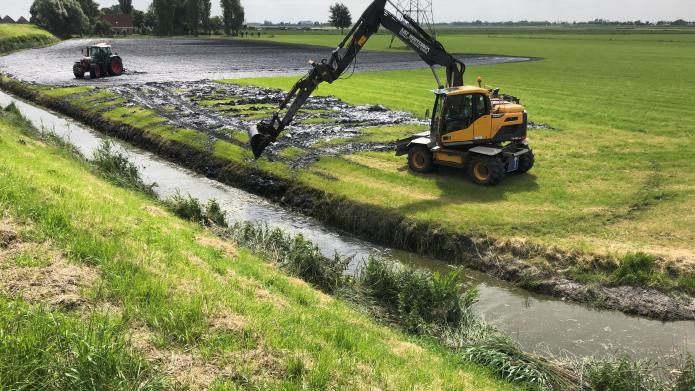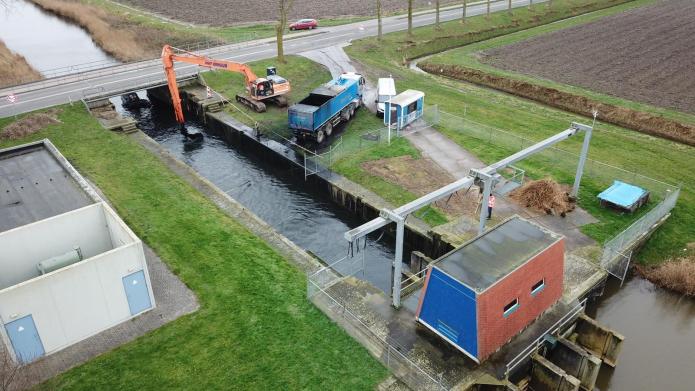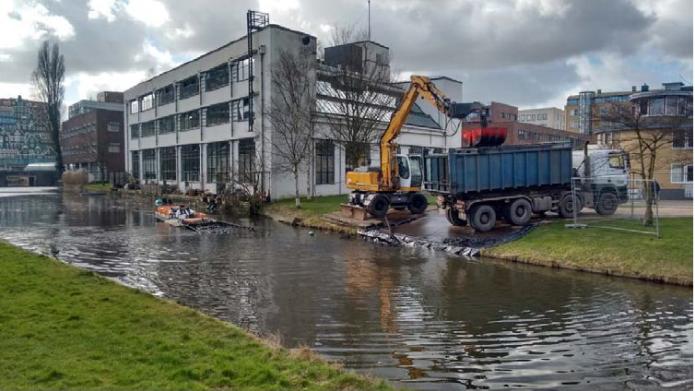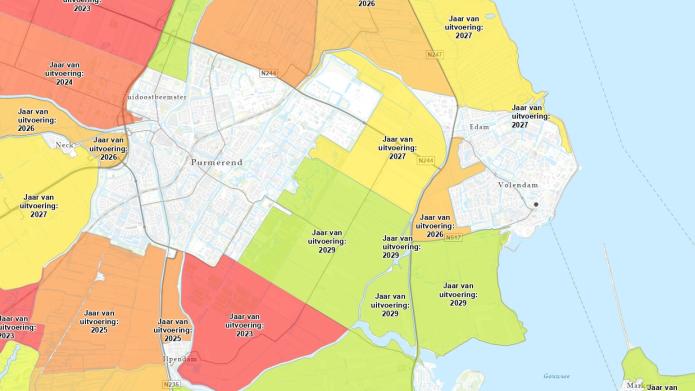Dredging
We dredge ditches to ensure the flow and discharge of a certain amount of water. And this is necessary to reduce flooding.
But dredging is also important for water quality. The water bottom always needs oxygen because the decomposition of plant debris is always going on there. If there is very little water above the bottom, oxygen soon disappears from that layer of water and plants and animals can no longer live there. By dredging, we keep the ditch at depth and prevent decay processes and lack of oxygen.



